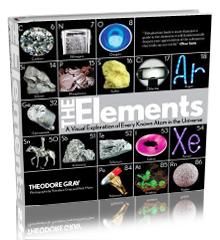Scary Object. | |||
| Sample Image | Spin Video | QuickTimeVR Rotation | |||
| Scary Object. This thing scares me. Maybe I'm just a ninny, but when a Geiger counter literally screams at me, I find it unsettling. Let me explain. My Geiger counter, a very fine modern thin-window model, has a maximum count rate of 350,000 counts per minute. If you exceed that rate, it emits a high-pitched tone indicating either "out of range" or "get the hell out of here now", depending on your point of view. This little puck, about an inch in diameter, sets off this scream any time it's closer than about an inch from the meter. Through 1/8 inch of lead it still reads many thousands of cpm. According to William Kolb, my reference for all things radioactive, the measurements I sent him indicate that it is probably a 100 micro-Curie radium source. Unfortunately the lettering has mostly worn off so I can't make out what it used to have stamped on it (I didn't want to spend too long pointing it towards my eyes at close range, trying to make out what it says). He describes its intensity by analogy: Held up against your cheek for one minute would roughly equal one modern dental x-ray. After several hours you would get a reddening of the skin due to radiation exposure. Whether you would also die of cheek cancer ten years later is harder to say, but I figure one or two x-ray equivalents to my hands is not an unacceptable risk, especially since the hands are not overly sensitive to radiation. I would not carry it around in a pocket, that's for sure. And I'm probably not going to keep it either, once I'm sure I have no more desire to photograph it, I'll turn it in to the local radiation safety office. A thing like this should not be rattling around loose in the world. This puck came as part of a nice, well-made set of slides made from various thicknesses of aluminum and lead, obviously meant as an educational tool to teach people the difference between alpha, beta, and gamma radiation. Generally speaking, gamma radiation will be partially stopped only by the thickest lead slides, beta will be stopped by the aluminum or lead slides, and alpha will be stopped by a wet noodle, sheet of paper, or a few inches of air. The price listed here was for the whole set, which included several other sources and the nice boxed set of slides: These will be added shortly. Source: Juan Jimenez Contributor: Theodore Gray Acquired: 16 March, 2007 Text Updated: 19 May, 2007 Price: $200 Size: 1" Purity: <1% | |||
|

